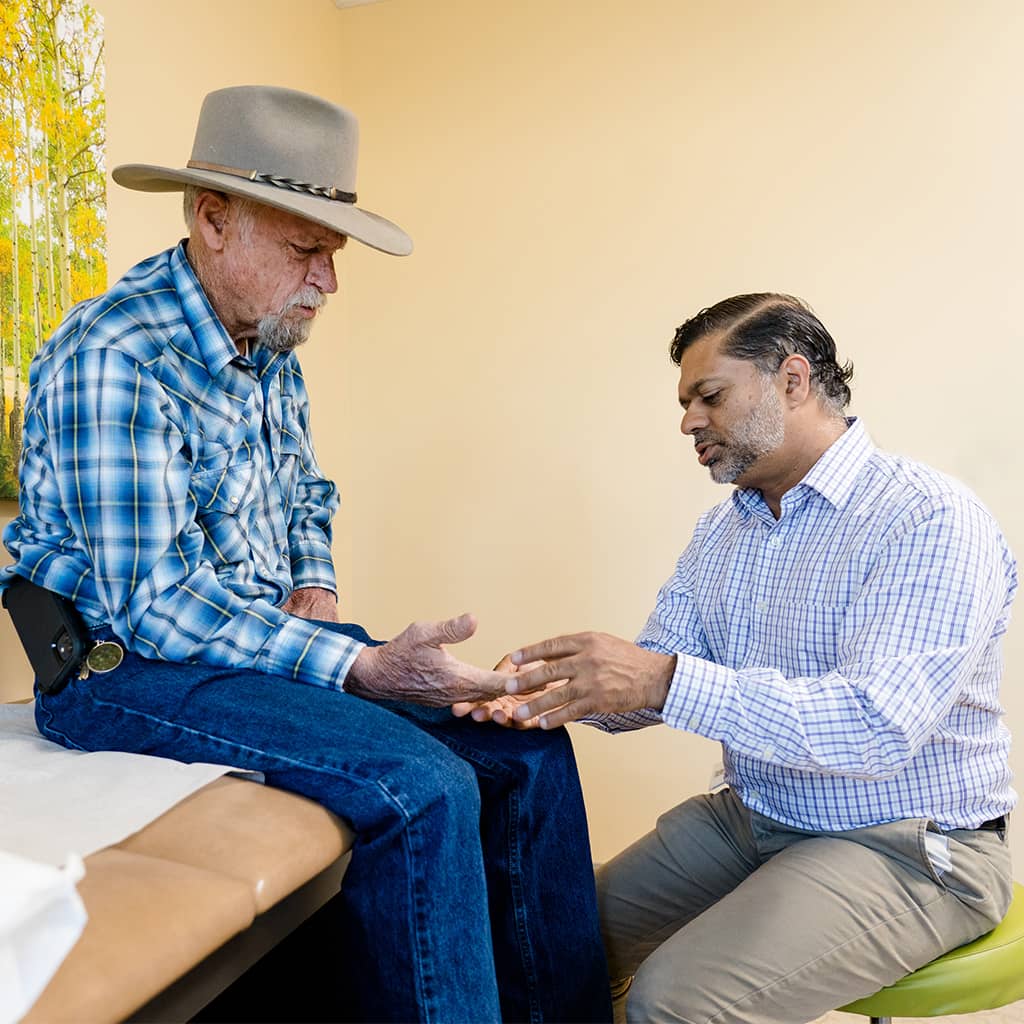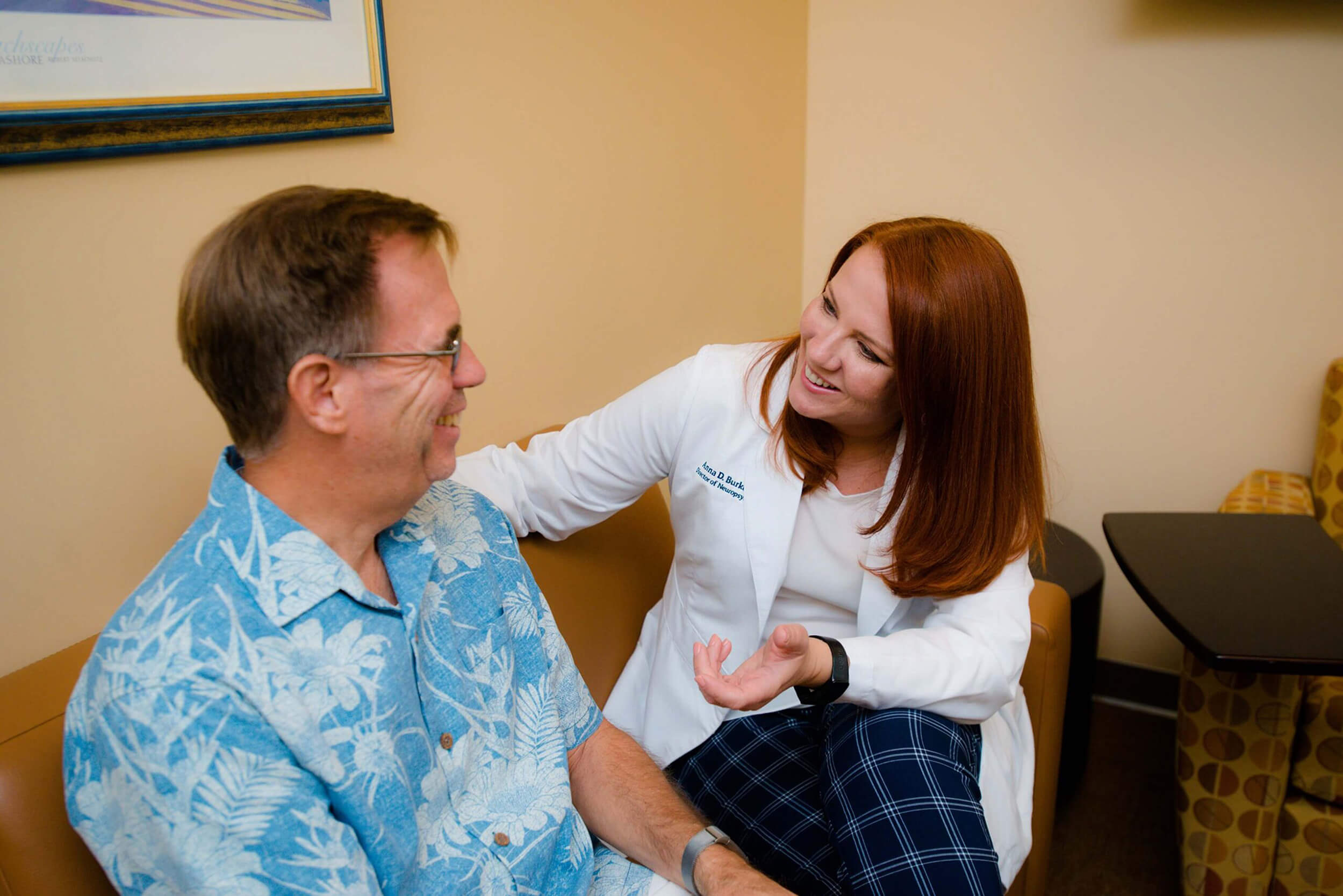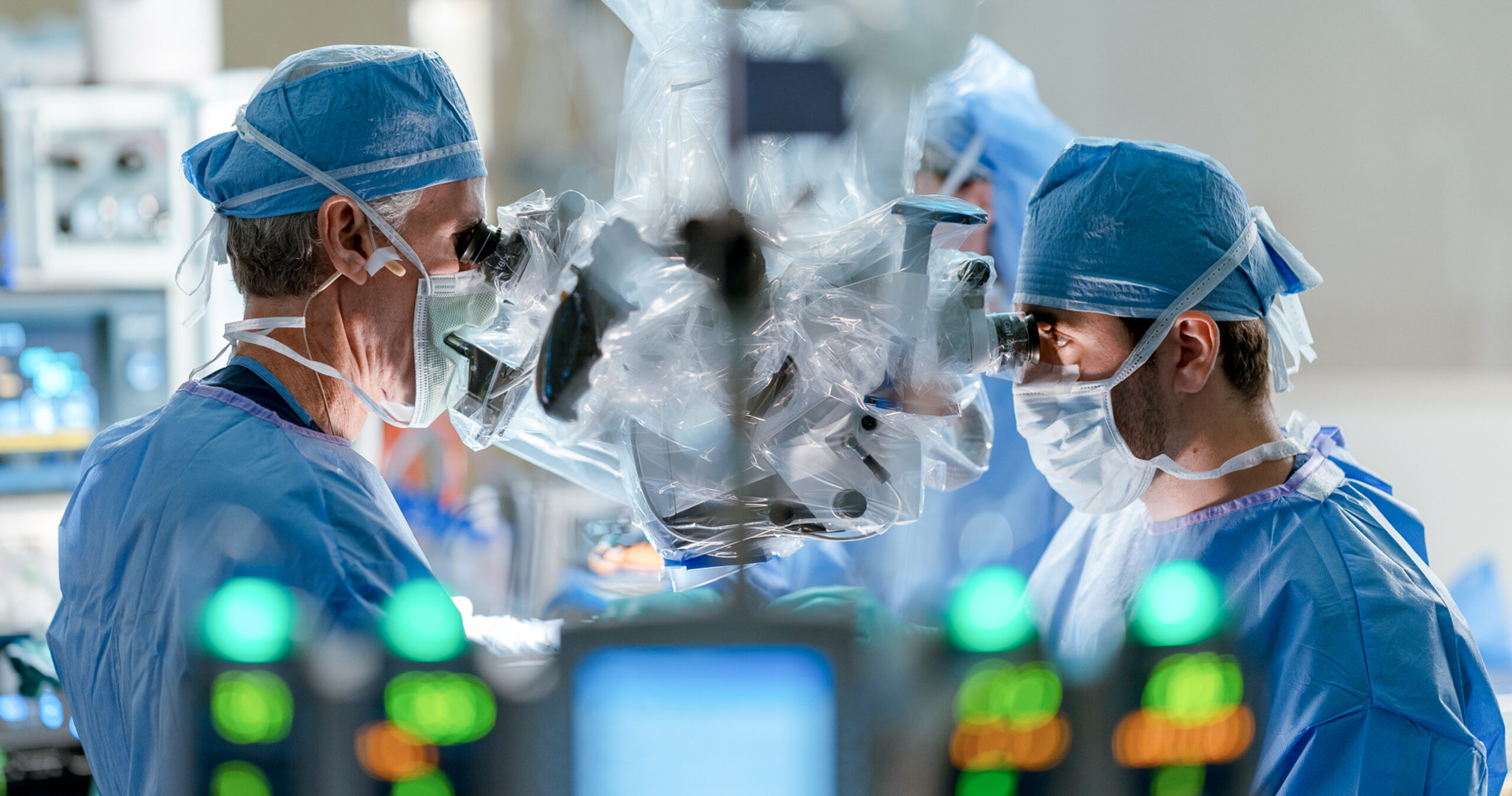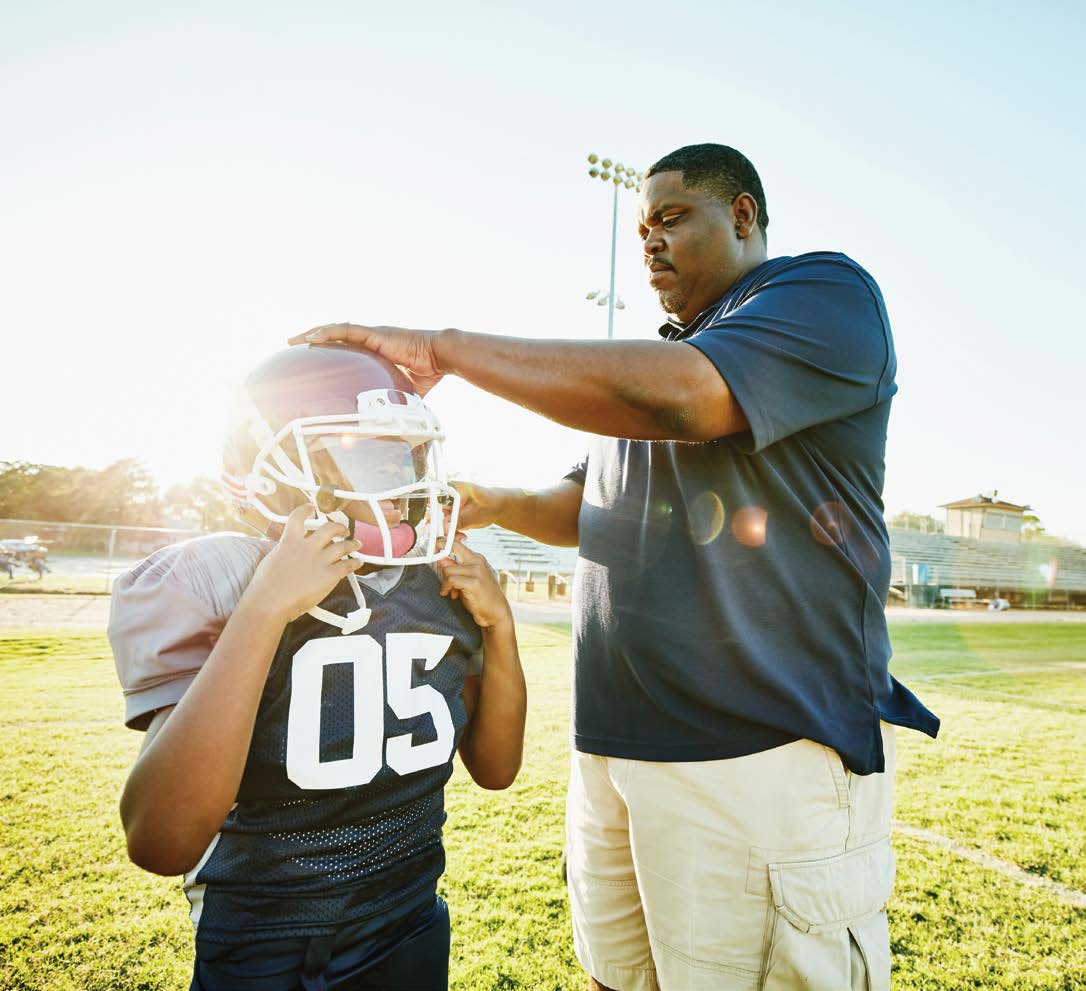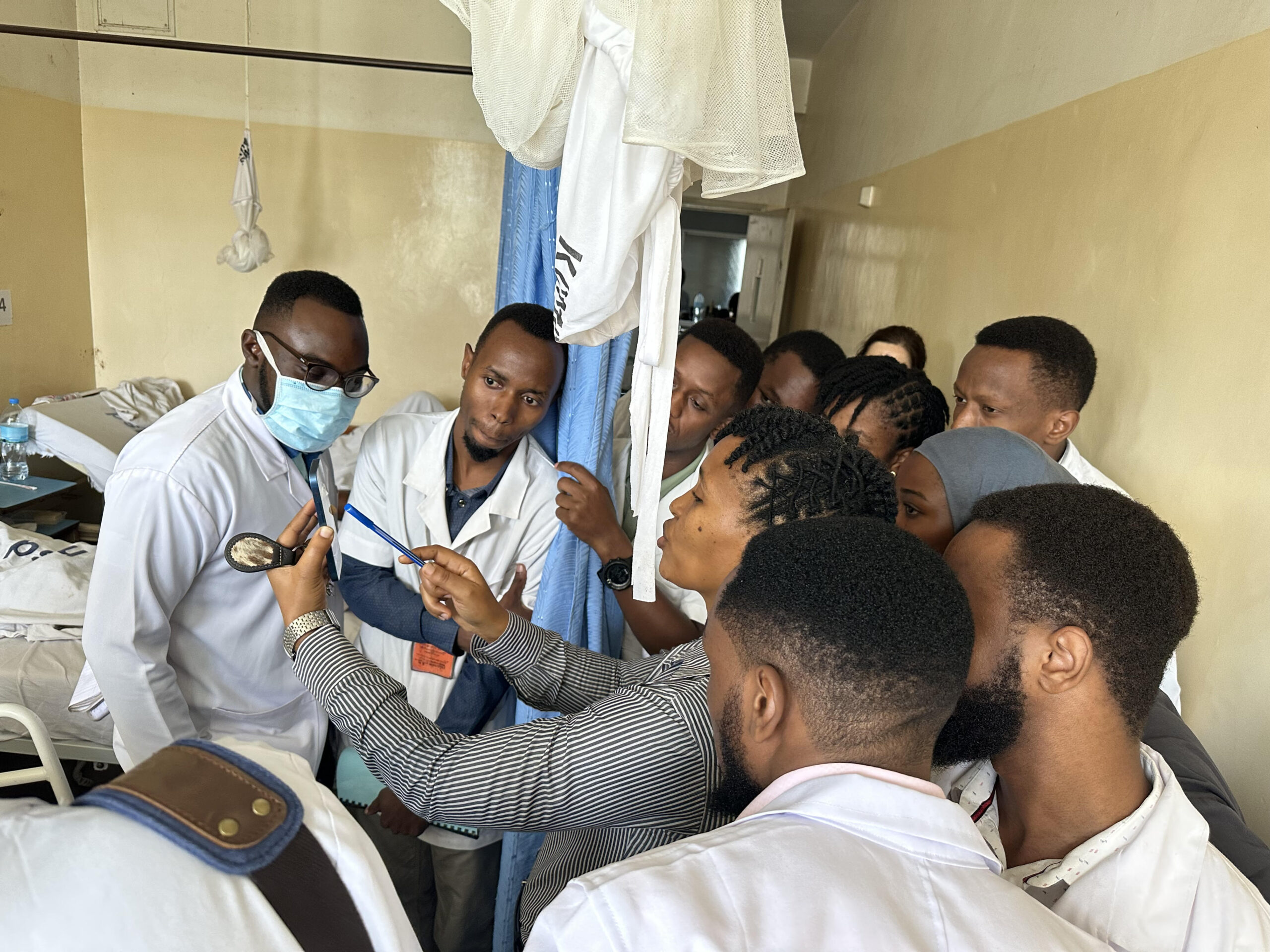A New Frontier In
Neuro-Rehabilitation Center
Support our mission to help patients with neurological injuries regain their confidence and independence.
Donate to Neuro-Rehabilitation Research, Treatment, and Technology
For many patients who have suffered a traumatic brain injury, spinal cord injury, aneurysm or AVM rupture, or stroke, the most challenging part of their journey comes after they leave the intensive care unit.
The Neuro-Rehabilitation Center helps patients regain their independence and self-esteem by providing a complete spectrum of care—from acute, inpatient, and outpatient services to school and work re-entry programs to therapeutic recreation. Moreover, in 2023, Barrow launched the Department of Physical Medicine and Neuro-Rehabilitation to provide additional individualized care services for each patient, with particular distinction in cognitive rehabilitation and vocational outcomes.
Your Support Advances Treatment with Neuro-Robotics
The Neuro-Rehabilitation Center is a leader in the use of neuro-robotics and therapeutic technologies, with 160 devices across the continuum of care. Funded by philanthropy, these technologies harness the power of neuroplasticity—the brain’s ability to adapt and rewire itself—to help patients reach higher levels of functioning. Neuro-robotics also precisely and objectively measure patients’ progress to keep them motivated and guide their rehabilitation treatment plan.
For example, the robotic exoskeleton has given hope to hundreds of Barrow patients who thought they might never stand or walk again. Other devices in the Center help patients regain upper body strength, fine motor skills, and swallowing function so they can return to everyday activities such as eating, drinking, brushing their teeth, and getting dressed.
Your Contributions Increase Rehabilitation Education
Barrow has a strong focus on teaching future generations of leading neuro-rehabilitation specialists. It collaborates with more than 20 universities nationwide for student internships, and in 2022, it launched the Barrow Physical Therapy Neurologic Residency Program, which trains rehabilitation specialists across the continuum of care.
Thanks to the generosity of Barrow donors, therapists in the Neuro-Rehabilitation Center can attend continuing education courses. These specialized training workshops allow therapists to learn how to implement the latest therapies, techniques, and technologies to optimize patients’ recovery.
Your Donations Empower Patients to Live Every Day to the Fullest
The final step in the neuro-rehabilitation continuum, the Center for Transitional Neuro-Rehabilitation (CTN), provides various programs in a holistic milieu environment to help patients transition back into their homes, community, work, and school. It also offers integral education and support services for families to help them assist in their loved one’s recovery.
With funding from generous donors, the CTN has been able to expand its Community Outings Program, which gives patients more opportunities for community reintegration and skill building outside of the clinic, including using public transportation and eating in restaurants. The technology and equipment supported by philanthropy enables CTN therapists to provide state-of-the-art treatment for patients with complex neurological conditions, helping them achieve their goals and reach their highest level of independence.
Barrow also provides critical research funding for the CTN, adding to its international academic and clinical reputation. In 2024, the CTN team published one handbook and three research papers related to patients’ reintegration into leisure and social activities and reducing caregiver burden. The team also gave eight local and national presentations.
Your Support, Their Stories
Grateful Barrow patients share how the Neuro-Rehabilitation Center has changed their lives.

Now, not only can I sign again, but I can also hug my children and play with my grandchildren.
[Name Title]
As a Deaf man, Arturo lost the ability to communicate when he was in a horrific care accident that left him unable use his hands or walk.

You Advance Innovative Research
Conventional vs. Robotic Therapy
Soft Robotics
Spinal Cord Model Systems
Brain Injury & Caregiver Burden
Discover More Programs
At Barrow Neurological Foundation, your donation is crucial in supporting three key areas: advanced patient care, curative research, and education for the next generation of neuroscientists. Learn more about how your donation impacts each of the areas we treat.
Support groundbreaking research and clinical trials to give ALS patients a better quality of life.
Help Barrow achieve its mission of transforming Alzheimer’s from a devastating diagnosis to a manageable, chronic condition.
Support Barrow scientists in developing lifesaving treatments for aneurysm and AVM patients.
Help Barrow provide patients from all walks of life with exceptional concussion and TBI research, treatment and care
Help us improve access to neurological care in the developing world through world-class education and training.
Support the Ivy Brain Tumor Center’s mission to find a cure for brain cancer.

